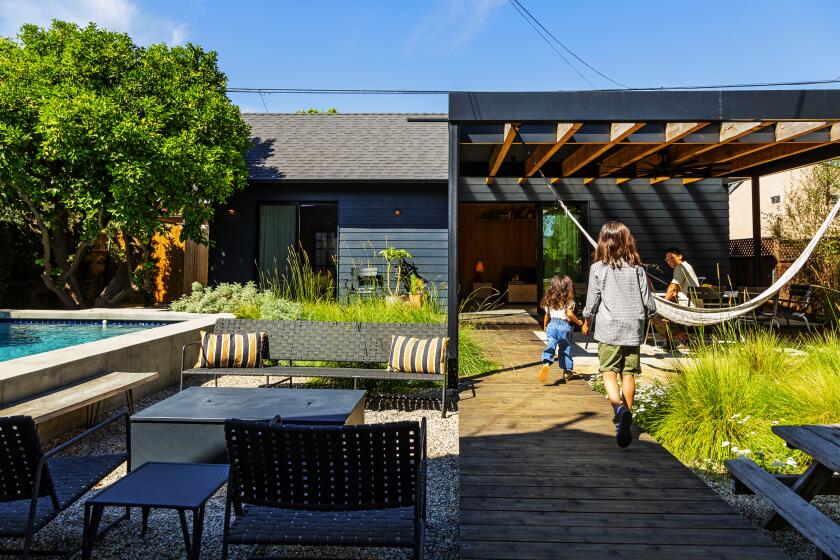City Beat: L.A. is losing its weird edges to bland, boxy and Instagram-friendly

L.A. Times Today airs Monday through Friday at 7 p.m. and 10 p.m. on Spectrum News 1.
- Share via
I don’t know about you, but I like my Los Angeles served with a big scoop of Wild West on top.
I like driving down its streets and its freeways and doing double takes — at the front yard that’s been turned into a safari scene, the building shaped just like a tamale or a camera.
I can never get enough of its madcap mishmash — the Craftsman next to the Tudor next to the concrete-and-glass cube.
I love the surviving spots that slip me straight back into its shaggy past, to Janis Joplin wailing at the Whisky a Go Go or the Keystone Kops kicking up dust.
And even though residents of an otherwise tidy Hancock Park block cheered five years ago when what was once known as the House of Davids lost its scrolled white wrought-iron gates topped with golden lions’ heads and its 19 front-lawn reproductions of Michelangelo’s David, I never drive by the now-nondescript house without feeling nostalgic for the weirdness that was.
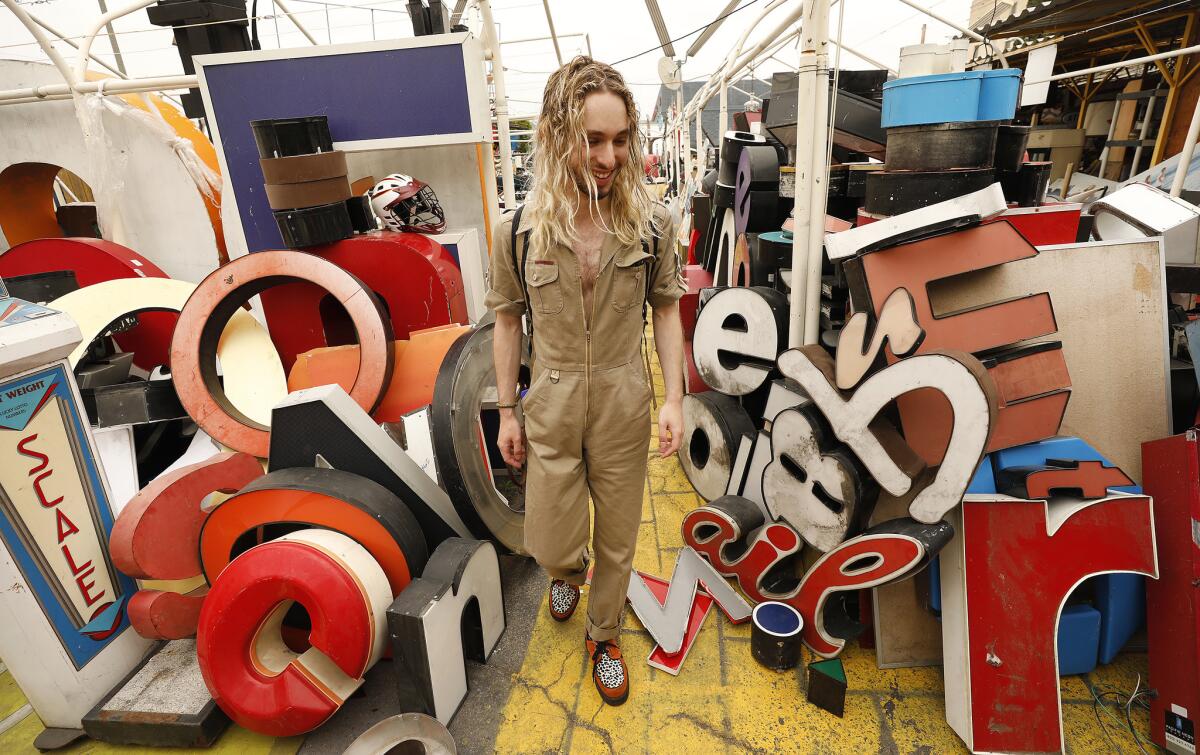
It’s because I love my Los Angeles full of texture and a little untamed that I worry in these days of rapid displacement and rampant development.
One of the first things I noticed as the rents in my Hollywood neighborhood went up was that the fluttering silk flags and drawings on torn cardboard and other random street art projects that often would appear overnight suddenly became more and more rare.
Let me be clear that my focus here isn’t on our pressing social problems. I’m talking about how L.A. appears and how it feels, about the ways in which it has long looked anything but Any City, U.S.A.
Thirty-seven years ago, Ridley Scott’s “Blade Runner” imagined a dystopian future L.A. more suitable for androids than humans, in which neon flashed endlessly and our nearly ever-present sun had given way to rain and dark umbrellas and drear.
That far-off future was dated 2019, this year. The movie’s vision hasn’t quite come to pass.
My own nightmare scenario, however, could be hurtling toward us fast — and it’s unsettling in its own way:
In that dark future, gone are the corner hot dog stands and the BBQ shacks belching smoke, the Virgins of Guadalupe and the small corner stores from whose walls they once gazed.
Gone is every last vintage flashing neon sign not pulled to safety and preserved by the Valley Relics Museum or the Museum of Neon Art.
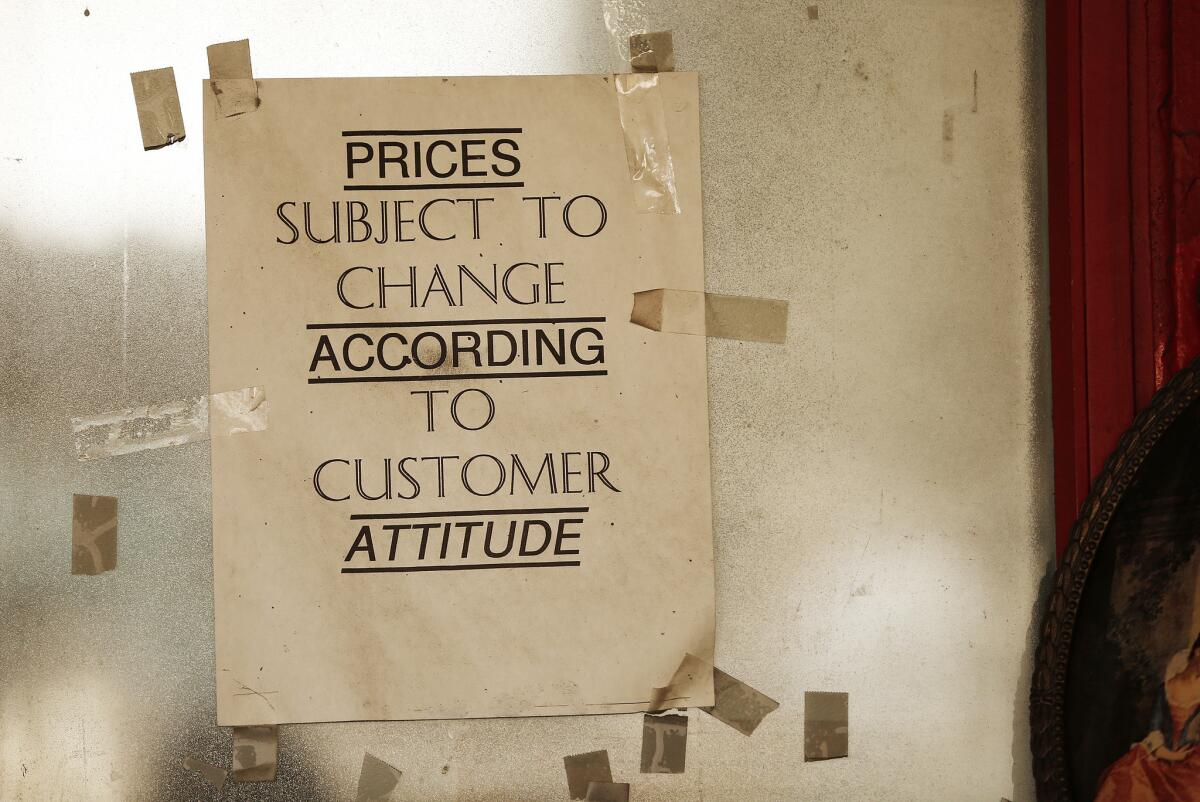
Gone are our Spanish-style homes with their tile roofs and arches, our storybook houses fit for hobbits and Snow White. They’ve all been replaced by the modern boxes now rising everywhere. (So many look to me like they come from the same Brand X catalog. Just plop down Generic Building No. 5 in white anywhere and throw bright stripes or color blocks on the facade.)
A giant iPhone already occupies the spot at the Sunset Strip’s eastern end where the Marlboro Man once perched, ready to rope steers.
But in my nightmare scenario, the strip is all sleek hotels and chain boutiques, and has been stripped of its last music club. Tourists pay $50 a pop to enter the Sunset Strip Selfie Museum, wedged between a Starbucks and an Apple Store, where they can dress up as Jim Morrison and Johnny Depp and pose in front of cartoonish backdrops of the Whisky or the Roxy or the Viper Room.
Sound crazy? Maybe, but those selfie “museums” are clicking with so many people now. I call them MEseums and YOUseums because they put the spotlight on us, not on real art or on our real surroundings.
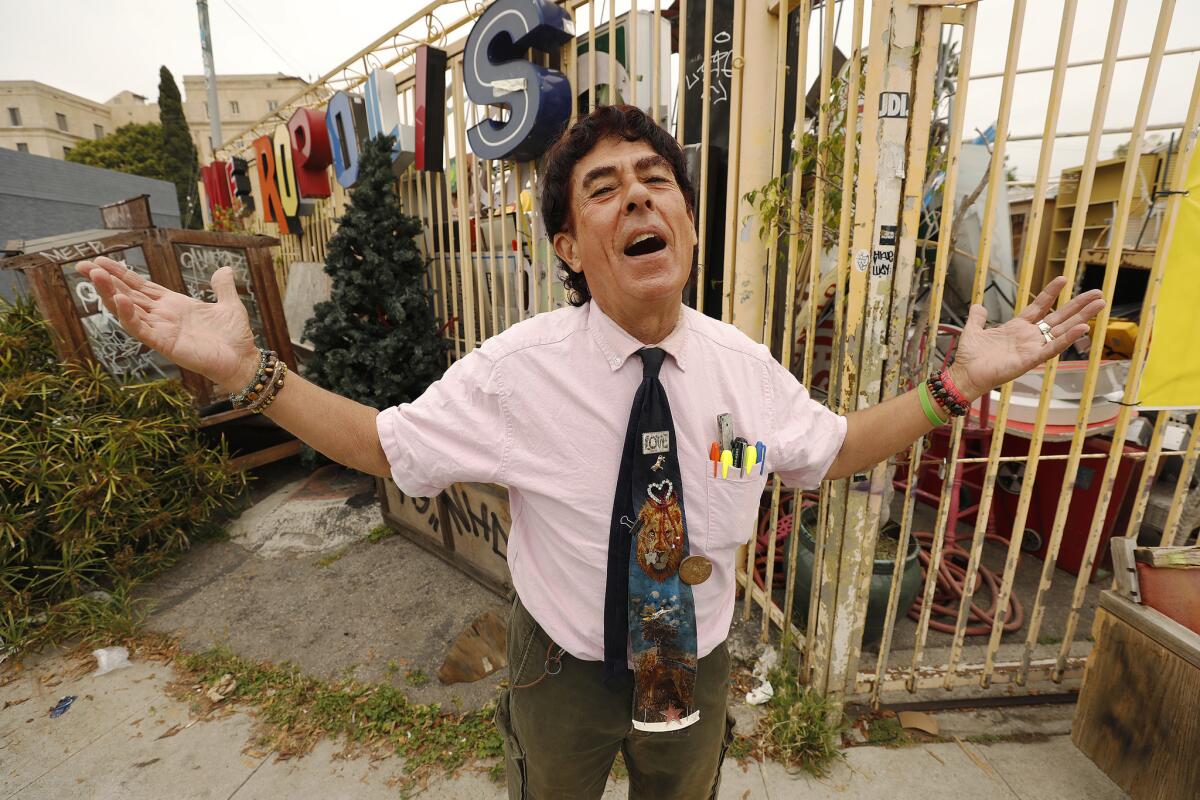
When I first arrived in L.A. 22 years ago, I lived above the Sunset Strip — and would often walk out in the morning and come across people who’d been out all night, scowling at sunlight or slouched over their eggs at the now-defunct Duke’s Coffee Shop.
A few weeks ago, I visited the block across Sunset from where Duke’s used to be — home to Terner’s Liquor and the Viper Room and the wood-front Ta-Ke Sushi restaurant, with its faded Japanese lanterns and its name in green inside a big red heart. The whole strip of stores was sold to a developer last year for $80 million. Now plans have been drawn up to put a futuristic complex in their place — a hotel and condo combo of curving white and plate glass, shaped a lot like a giant letter D.
On the west end of the block when I visited, the novelty shop Aahs! was in the process of closing down, selling off the last of its kitsch and gag gifts — its ugly Christmas sweaters, its fake mustaches, its One Direction keychains, its scowling Trump coffee mugs.
Nothing this low-end and lighthearted, I thought, will ever exist here again. And even though the developer has talked about incorporating a re-created Viper Room, I walked through the club’s open front door into its afternoon darkness, took in the neon-lit bar and the well-worn stools, and couldn’t imagine the soul of the place surviving such a move.
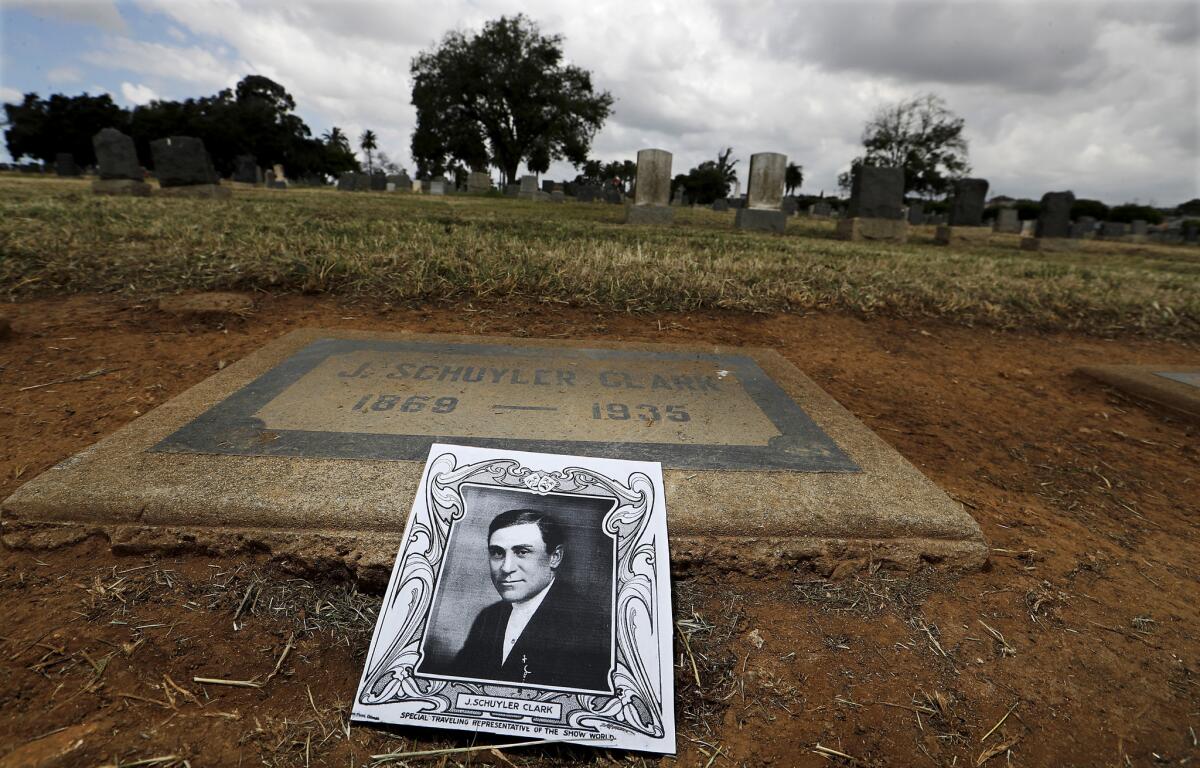
So, too, when I heard that my favorite L.A. emporium of trash and treasures would no longer spill onto the sidewalks of South La Brea Avenue in Hancock Park. I still remember my first sight of the jumble, how I slowed my car and tried to take it in and couldn’t figure out what it was about, let alone where it started and ended.
Nick Metropolis, the man whose store bears his name, over the years has grown deeper and deeper and deeper in debt, trying to survive rising rents. Even a crowdfunding effort couldn’t bail him out. Now he’s moving his mountain of giant letters, mannequins, old signs and L.A. ephemera to Adams-Normandie, where I hope prop masters and set designers and scavengers will follow him. But even the act of packing and unpacking years of organic accumulation can’t help but alter its alchemy.
Lately, I’ve been picturing a pond, with a few bubbles rising and then popping on the surface. Soon, I imagine the surface will be flat. There’ll be no trace — and over time diminishing memory — of so many of our oddities.
That’s what I was feeling last month when I found myself at Evergreen Cemetery in Boyle Heights, attending a ceremony that has been held there for 97 years. The cemetery itself often feels forgotten. The Pacific Coast Showmen’s Assn.’s ceremony one day soon may be, too.
There amid the parched grass at Evergreen’s eastern edge, in a place called Showmen’s Rest, lie the remains of fat ladies and other carnival and circus workers. Dainty Dotty Jensen, born in 1909. Minerva Boyd, born in 1883. Hugo Zacchini, the first man ever shot out of a cannon. A small crowd who still work in the business gathered at the site. They swept the graves and decorated them with American flags. But they are scattered these days, some now far from L.A. And when it came time to remember those in their line of work who had died in the past year, no one had anything to say about quite a few on the list.
Cities slough off their history. They grow impatient. They change. I get this. Really, I do.
Richard Schave and Kim Cooper, whose Esotouric tours delve into the city’s history, were the ones who urged me to come see the annual Showmen’s Rest gathering while I still had the chance. Schave also pointed me to the writings of a Times writer named Timothy Turner, who calmed my fears of a bland future a bit.
In one clip I found, Turner was worried about Main Street, because of so-called neighborhood improvements and plans for a new “Union depot.”
“Main Street is getting altogether too utilitarian for us. We have a soul full of romance,” he wrote, under the headline “Our own Main Street: Most colorful place this side of Europe will soon be made commonplace by industrial progress.”
That was in 1922.
Nita Lelyveld wants to know your L.A. story. Email her at [email protected].
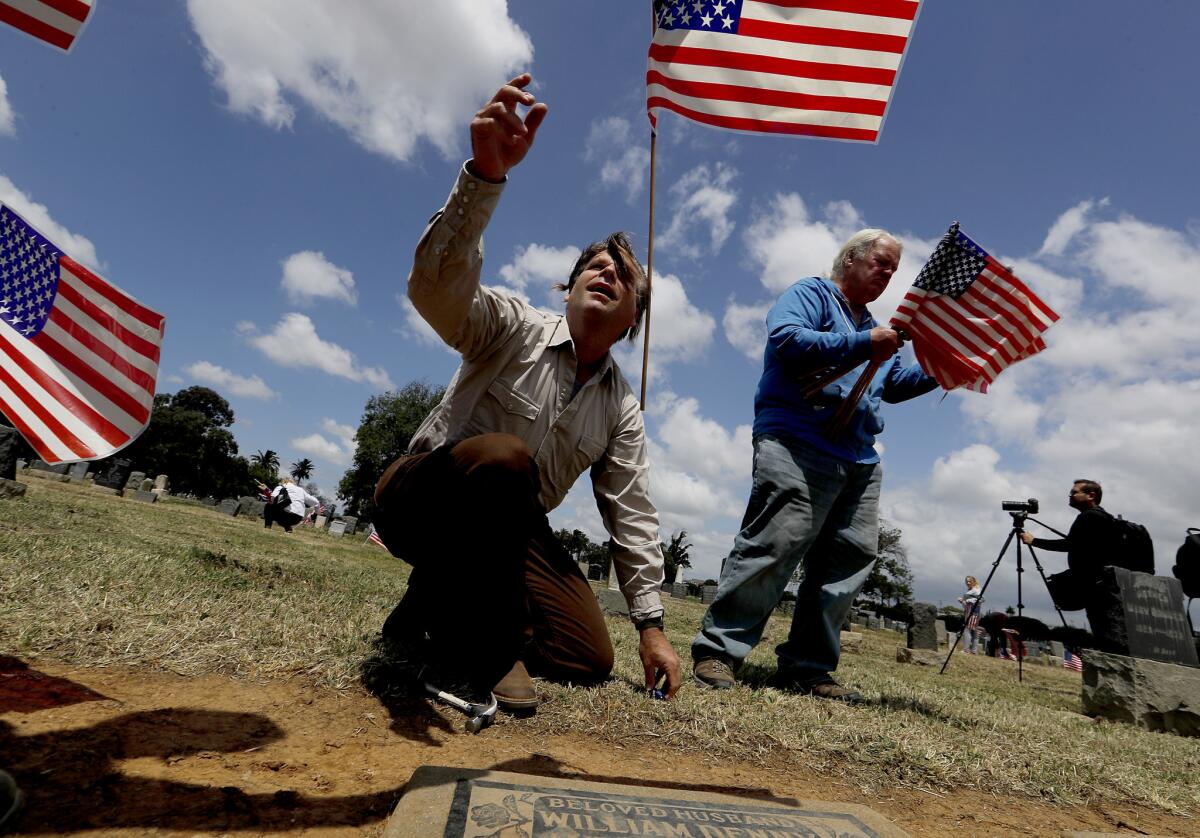
More to Read
Sign up for Essential California
The most important California stories and recommendations in your inbox every morning.
You may occasionally receive promotional content from the Los Angeles Times.





